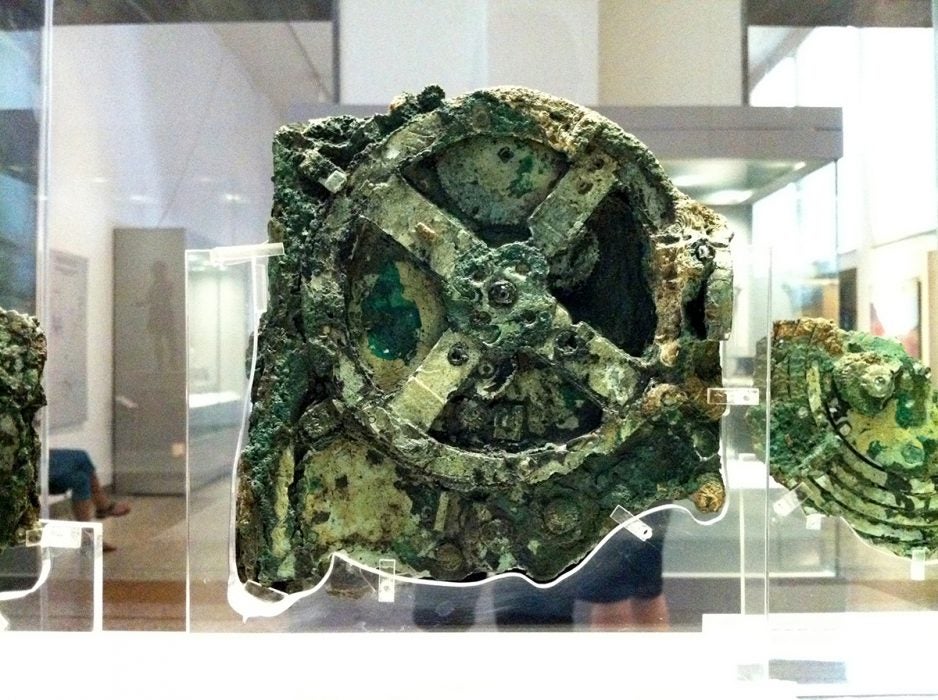In the first century B.C.E., a Roman ship sank near the Greek Island of Antikythera in the Aegean Sea. For the next 2,000 years, the wreckage remained untouched in approximately 55 meters (180 feet) of water until its discovery in 1900 by some off-course sponge divers. Numerous expeditions since have retrieved incredible artifacts and vastly increased knowledge of ancient Roman and Greek culture and technology. The recent recovery of a bronze arm indicates that still more statues may remain hidden in the seabed.
The first excavations of the wreck occurred shortly after its discovery. Given the technology available at the time, the depth was at the outer limits of where divers could work, and priority was given to retrieving artifacts rather than careful archaeological survey. Some large items were retrieved, including arms and heads of statues. Later excavations of the site collected more mundane but informative items. For example, large storage jars known as amphorae were retrieved; their design gave archaeologists clues to the age and origin of the ship and its cargo. Pieces of pottery, a common find in the region, helped pinpoint the date of the ship’s fateful voyage, around or after 30 B.C.E.

There were also some truly spectacular finds. A group of eleven ornate glass bowls and skyphoses (handled bowls with a base, sort of like a very broad chalice) was discovered, many of them improbably intact. How these vessels survived the wreck and 2,000 years on the sea floor is anyone’s guess. These bowls were high-end luxury goods destined for market, likely manufactured in Alexandria. Some of the bowls were inlaid with mosaics.
But the most amazing find of all was a nondescript lump that turned out to be series of interlocking gears and plates. The mechanism is more sophisticated than anything known from the ancient world. The teeth of each gear were precisely cut, and each gear spun independently, turned by other gears, a system known as epicyclic gearing. Epicyclic gearing was not known to exist elsewhere in the West for another 1,500 years. Careful analysis of the mechanism confirms that the Antikythera Mechanism, as the device is known, is a computer that tracked the date according to multiple calendars as well as the subtle movements of the moon. Other dials indicated the dates of upcoming solar eclipses, lunar eclipses, and important dates such as the Olympics. Aside from the incredible engineering of this device, it proved a very detailed knowledge of the motion of the Earth and the moon. Parts are missing, so its full function remains unknown.
Clearly the Antikythera shipwreck, and possibly other wrecks located in the vicinity, offer amazing insight into not just the technology but the culture and understanding of a bygone age. The new discoveries indicate that there is more to find, including, perhaps, the missing parts of the mechanism. With modern techniques and equipment, scientists are closer than ever to uncovering all the secrets of Antikythera.







